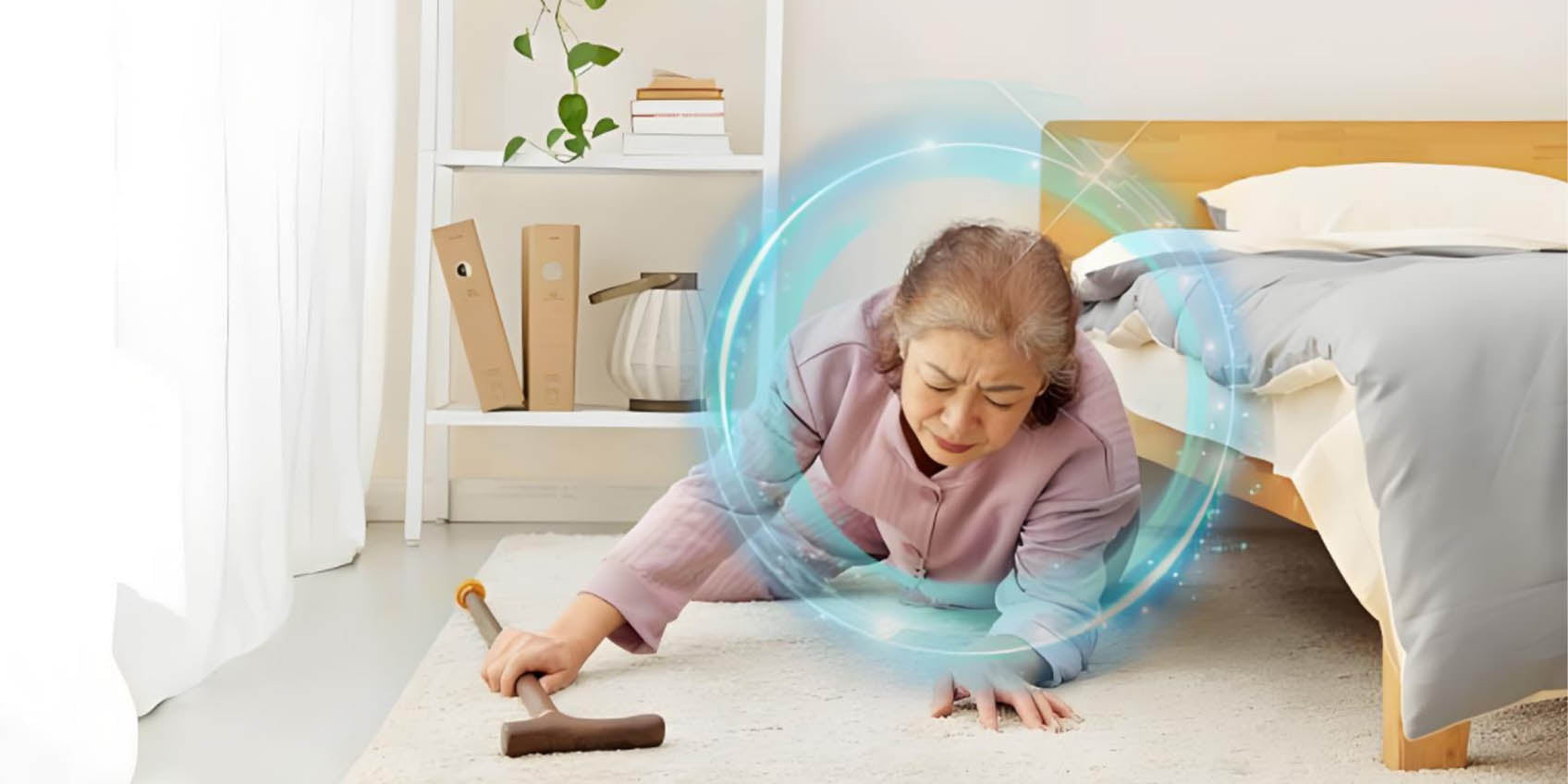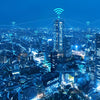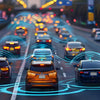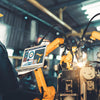Smart Fall Detection: Precise Alerts for Enhanced Personal Safety

With the rapid development of Internet of Things (IoT), Artificial Intelligence (AI), sensor technology, and big data analysis, smart fall detection systems have become increasingly important in fields such as elderly care, healthcare, smart homes, and public safety. Traditional fall monitoring relied on human observation and basic sensors, but with innovations in ToF (Time of Flight) sensors, accelerometers, gyroscopes, and machine learning, smart fall detection systems have enabled more precise, automated, and real-time monitoring that can quickly identify and report fall incidents, ensuring personal safety.
Fall detection plays a crucial role not only in elderly care, rehabilitation, and independent living but also provides effective safety protection in public spaces, commercial facilities, and health monitoring.
What is Fall Detection?
Fall Detection is a technology based on smart sensors and algorithms designed to monitor and identify whether an individual has fallen in real-time. By analyzing body posture and movement patterns, fall detection systems can accurately determine whether a fall has occurred and promptly issue alerts, enabling emergency responses from caregivers or systems.
Fall detection technology is widely used in home care, elderly monitoring, medical emergencies, and rehabilitation, helping caregivers quickly detect abnormalities and reduce injuries caused by falls.

Smart Health Management: Real-Time Monitoring and Precise Alerts
Elderly Fall Detection
With the aging population, falls among the elderly have become more frequent. Falls not only result in injuries but can also lead to severe complications. Smart fall detection systems use ToF sensors, accelerometers, and gyroscopes to monitor the elderly's movements in real time, detect falls, and issue immediate alerts.
- Embedded Smart Wearables: Devices such as smartwatches, belts, or clothing sensors continuously track the elderly’s posture changes. When a fall is detected, the system immediately sends an alert to caregivers or family members.
- AI and Machine Learning Integration: Through big data analysis, the system can more accurately identify falls, avoid false alarms, and provide personalized monitoring based on the elderly's physical condition and activity habits.
- Contactless Sensor Technology: To protect user privacy, modern fall detection systems use non-contact monitoring through infrared sensors or ToF sensors, which can track the elderly's movements without direct physical contact.
Home Safety Monitoring
In smart homes, fall detection technology integrates with smart cameras and sensors to provide added security for family members.
- Automated Home Alarm System: When a family member falls, the system automatically activates, sending alerts to family members or community service centers to ensure timely response in emergency situations.
- Integration with Other Smart Devices: The fall detection system can be linked with smart door locks, lighting systems, and temperature control devices to optimize home security management and improve convenience.
Health Data Analysis and Rehabilitation Management
The smart fall detection system can monitor the elderly's daily activities in real time, generating health reports based on data from accelerometers, heart rate monitoring, and motion tracking, assisting healthcare professionals with scientific health management.
- Tracking Daily Activity Levels: The system uses fall detection data alongside daily activity monitoring to analyze whether the elderly are active, helping assess their rehabilitation progress.
- Personalized Fall Prevention Suggestions: Based on fall detection data, the system can offer customized health recommendations to help reduce the occurrence of falls and improve the elderly's quality of life.
- Continuous Data Tracking: The system can track the elderly’s health over time, using historical data to analyze fall patterns and assist doctors in developing appropriate treatment and rehabilitation plans.

Public Safety and Smart Buildings: Risk Prevention and Enhanced Safety
Hospitals and Elderly Care Institutions
In hospitals, elderly care centers, and rehabilitation hospitals, fall detection technology can effectively monitor patients' activities and promptly detect falls to reduce accidents.
- Bedside Monitoring and Real-Time Alerts: Patients can be monitored for posture changes via bedside devices, and when a fall occurs, the system immediately sends an alert to nurses or caregivers for urgent action.
- Mobile Patient Monitoring: For elderly patients with limited mobility, fall detection technology helps caregivers track the patient’s condition, automatically notifying them of falls to allow for quick intervention.
- Automated Emergency Response: By integrating with other emergency systems like smart call systems, fall detection systems can send alerts to relevant personnel’s devices, ensuring prompt resource allocation.
Smart Buildings and Public Facilities
In malls, museums, stadiums, and other public spaces, smart fall detection systems can monitor crowd movements and identify falls in real-time, triggering emergency responses.
- Safety Assurance in High-Traffic Areas: In crowded public spaces, fall detection systems can quickly detect a fallen individual and trigger an emergency response to prevent injuries.
- Integrated Emergency Response Systems: Fall detection systems work with building security and emergency broadcast systems to ensure swift action to protect the affected person.
- Seamless Integration with Smart Cities: In smart city development, fall detection technology can connect with city surveillance systems, medical emergency centers, and public safety platforms for more efficient safety management.

Precise Monitoring and Privacy Protection: Respecting Privacy, Ensuring Safety
Privacy Protection and Data Security
Smart fall detection systems focus not only on effective monitoring but also on protecting user privacy. Using ToF sensors and infrared technology, the system enables non-contact monitoring, avoiding infringement of personal information.
- Anonymous Detection: By encrypting sensor data, the system avoids recording specific images of users and only collects essential posture change data.
- Data Encryption and Transmission: All fall data is encrypted during transmission to prevent sensitive data from being leaked.
- Transparent Privacy Policies: The system provides clear privacy policies, ensuring users understand how their data is collected and used, safeguarding their information.
Real-Time Data Feedback and Intelligent Response
Smart fall detection systems can collect monitoring data in real time and analyze it through a cloud computing platform, ensuring timely responses to each fall incident.
- Real-Time Monitoring and Feedback: The system can send fall alerts via mobile phones, smart devices, or computers to ensure immediate handling.
- Integration with Emergency Services: Upon detecting a fall, the system can automatically contact nearby emergency services or family members for a quick response, improving incident handling efficiency.
- Data-Driven Prevention Measures: Based on collected fall data, the system can generate analysis reports to predict potential risks and provide personalized preventive suggestions.
Conclusion
Smart fall detection technology, using ToF sensors, accelerometers, and machine learning, has become an integral part of elderly care, public safety, and smart homes. As technologies like AI, IoT, and big data analysis continue to evolve, fall detection systems will become more precise and efficient, ensuring personal safety while offering more intelligent and personalized services.
In the future, smart fall detection technology will play an increasingly important role in healthcare, elderly care, and public facilities, contributing to safer and healthier living environments. By continually optimizing system performance and improving data accuracy, smart fall detection will become an essential part of our daily lives, offering comprehensive safety assurance to users worldwide.
Keywords: Smart fall detection, elderly care, fall detection, ToF sensors, non-contact monitoring, machine learning, accelerometers, healthcare safety, public safety, rehabilitation management.
Please upload banner from store admin blog pages
Please select collection from store admin blog pages




